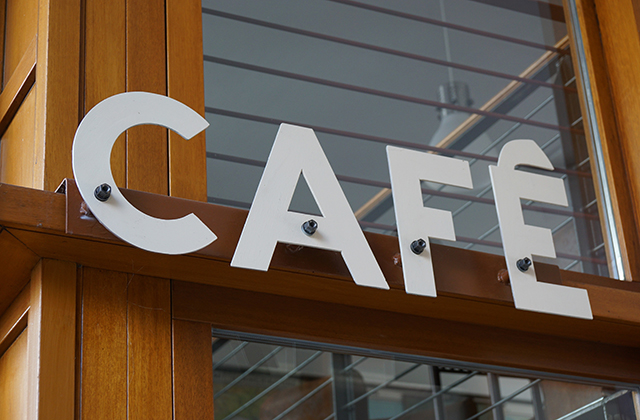
Mastering the Art of Signage: Tips and Tricks from Top Signwriters
Have you ever walked down a bustling street and found yourself captivated by a beautifully designed sign? Signage plays a crucial role in capturing attention, conveying messages, and creating brand awareness. In this article, we will explore the art of signage and provide you with valuable tips and tricks from top signwriters. Whether you’re a business owner looking to enhance your storefront or a signwriting enthusiast, this guide will help you master the art of signage. Signwriters Sydney attract customers through their visual works that they put in with our signages.
1. Introduction
Signage is an essential element of visual communication. It serves as a powerful tool to attract customers, communicate information, and establish a brand presence. Effective signage can make a significant difference in the success of a business by grabbing attention and creating a lasting impression. Let’s delve into the key aspects of mastering the art of signage.
2. Importance of Signage
Signage acts as a silent salesperson, enticing potential customers and inviting them to explore further. It serves as a beacon, guiding people to a desired location or conveying important information. In today’s competitive market, where attention spans are short, eye-catching signage can make your business stand out from the crowd. An appealing and well-placed sign can increase foot traffic, boost brand recognition, and ultimately drive sales.
3. Understanding the Audience
To create effective signage, it is crucial to understand your target audience. By identifying your target market, you can tailor your signage to appeal to their specific needs and preferences. Analyzing demographics such as age, gender, and interests can help you design signage that resonates with your target audience.
3.1. Identifying Target Market
Consider who your ideal customers are and what message you want to convey to them through your signage. Are you targeting young professionals or families? Understanding your target market’s preferences, lifestyles, and values will guide your signage design choices.
3.2. Analyzing Demographics
Demographic data provides valuable insights into the characteristics of your potential customers. Analyze factors like age, gender, income level, and location to create signage that appeals to specific segments of the population.
4. Designing Effective Signage
The design of your signage is crucial for capturing attention and delivering your message effectively. Here are some tips for creating visually appealing signage:
4.1. Choosing the Right Font and Colors
Select fonts that are easy to read from a distance. Avoid using overly decorative or complex fonts that can hinder legibility. Similarly, choose colors that contrast well and ensure readability. High contrast between the text and the background will make your signage more noticeable.
4.2. Creating Eye-catching Graphics
Incorporate visually appealing graphics that align with your brand identity and convey your message effectively. Use high-quality images, illustrations, or logos that are clear and engaging. Remember, a picture is worth a thousand words, and a well-designed graphic can capture attention and leave a lasting impression.
5. Placement and Visibility
The placement of your signage plays a significant role in its effectiveness. Consider the following factors when determining the location and visibility of your signage:
5.1. Location Matters
Place your signage in strategic locations where it can reach your target audience. Whether it’s a storefront sign, directional sign, or billboard, ensure it is visible to the people you want to attract. Consider factors like foot traffic, line of sight, and the flow of people to maximize the impact of your signage.
5.2. Size and Legibility
Size matters when it comes to signage. Ensure your sign is appropriately sized to be easily readable from a distance. Take into account the viewing distance and angle to determine the optimal size and font size. Legibility is key – people should be able to understand the message quickly and effortlessly.
6. Signage Maintenance and Upkeep
To ensure your signage remains effective and visually appealing, proper maintenance is essential. Consider the following practices for signage maintenance:
6.1. Regular Cleaning
Keep your signage clean and free from dirt, dust, or any other elements that can obscure its visibility. Regularly wipe down your signs and perform routine maintenance to ensure they stay in top condition.
6.2. Repairs and Replacements
Address any damages or wear and tear promptly. If your signage becomes faded, damaged, or outdated, consider replacing or updating it. Crisp, well-maintained signage reflects positively on your business and maintains a professional image.
7. Signage in the Digital Age
In today’s digital era, traditional signage has evolved to incorporate technology and interactivity. Consider these innovative approaches to make your signage stand out:
7.1. Incorporating Technology
Explore digital signage solutions that allow you to display dynamic content, videos, or even interactive elements. Digital signage can grab attention and provide real-time information, promotions, or updates.
7.2. Interactive Signage
Engage your audience with interactive signage experiences. Incorporate touchscreens, augmented reality, or QR codes to create interactive elements that encourage customer engagement and enhance their overall experience.
8. Conclusion
Mastering the art of signage requires a thoughtful approach to design, understanding your audience, and utilizing effective placement techniques. By following the tips and tricks provided by top signwriters, you can create visually appealing signage that captures attention, communicates effectively, and boosts your brand presence. Remember to consider the unique needs of your target market, regularly maintain your signage, and embrace the possibilities of technology in the digital age. Visit us in our office for signage inquiries.